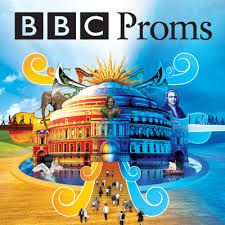 United Kingdom Prom 31. Tansy Davies, Mahler. National Youth Orchestra of Great Britain/Sir Mark Elder (conductor), Royal Albert Hall, London, 8.8.2015 (CC)
United Kingdom Prom 31. Tansy Davies, Mahler. National Youth Orchestra of Great Britain/Sir Mark Elder (conductor), Royal Albert Hall, London, 8.8.2015 (CC)
Tansy Davies – Re-greening
Mahler – Symphony No. 9
Composed specifically to be coupled with Mahler’s Ninth Symphony, Tansy Davies’ Re-greening is a seven-minute conductor-less piece. There is quite a visual aspect, therefore – the trumpet stands at one point, clarinets raise their instruments as if responding to a Mahlerian instruction. Fresh, ever youthful, the piece calls in Spring as the year turns. The shamanic element is pronounced: a complex texture of refrains, in the composer’s own words, “combine to form a kind of musical forest”. The orchestra has to sing, too, and sing they did, wonderfully, two old English melodies -“Sumer is icumen in” would be the more famous of the two, the Tallis Canon the other – as the composer puts it, “drifting through the work as if on a gentle breeze”. Davies has impressed massively before, principally with the astonishing opera Between Worlds for ENO at the Barbican: one is reminded that there is an important part for a Shaman in that piece. Here, in a much shorter space of time, she proved her worth again. The intricate use of the orchestra was magnificent, and the NYO were clearly inspired by the conductor-less and vocal responsibilities required of them.
Mahler’s Ninth Symphony may indeed seem adventurous for a youth orchestra, even if that orchestra is the NYO. And it is certainly true that there have been more profound realisations; yet there was concurrently so much to admire in what must be a once-in-a-lifetime experience for some members (not all go on to be professional musicians, remember). Mark Elder’s Mahler is well respected, and with good reason. He is a musical conductor with a sure grasp of dramatic flow – see his work in the opera pit – who also understands the place of stark juxtaposition in Mahler’s music. He is not one to linger: both first and last movements were on the brisk side. But he is one for detail, and the chamber music transparency of Mahler’s scoring, even at higher dynamic levels, was what really impressed on this occasion. The poignancy of an oboe doubling strings for example, simply a doubling in many conductors’ hands, became a real emotive addition to the line here. Gestures were honoured (swirls of sound as four harpists glissando-ed at the same time). Counterpoint, again so important to Mahler, was crystal clear, even in the most massive climax. If the effect of the darkest moments of the first movement were blunted, one suspects this was more Elder than the NYO, despite the players’ youthful age. The end of the first movement was perfectly controlled – which just made the inter-movement applause even more distracting, unfortunately.
If the Ländler of the second movement was missing a Bruno Walter-like authentic grittiness, it held a treasure trove of moments: superb lip trills from the first horn Ben Goldscheider, marching band-like trombones. Again, the transparency was highly impressive; in the Rondo-Burleske it was the accuracy that was to the fore. The lower brass held great heft, while Aaron Akugbo’s trumpet contributions were of the highest calibre.
That finale in the hands of youth was quite a prospect, and how the NYO delivered. Again, Elder’s speed was fast, but the massed strings were nicely sonorous. A special mention for some radiant viola solos from Alinka Rowe. Stunningly blended brass, a phenomenal fall to pianissimo or beyond after climaxes from the strings and terrific string control at the lowest dynamic levels; all contributed to this memorable performance. The audience silence as the long unison string lines unfolded, almost inaudibly, spoke volumes. The NYO can justifiably be proud.
Colin Clarke

